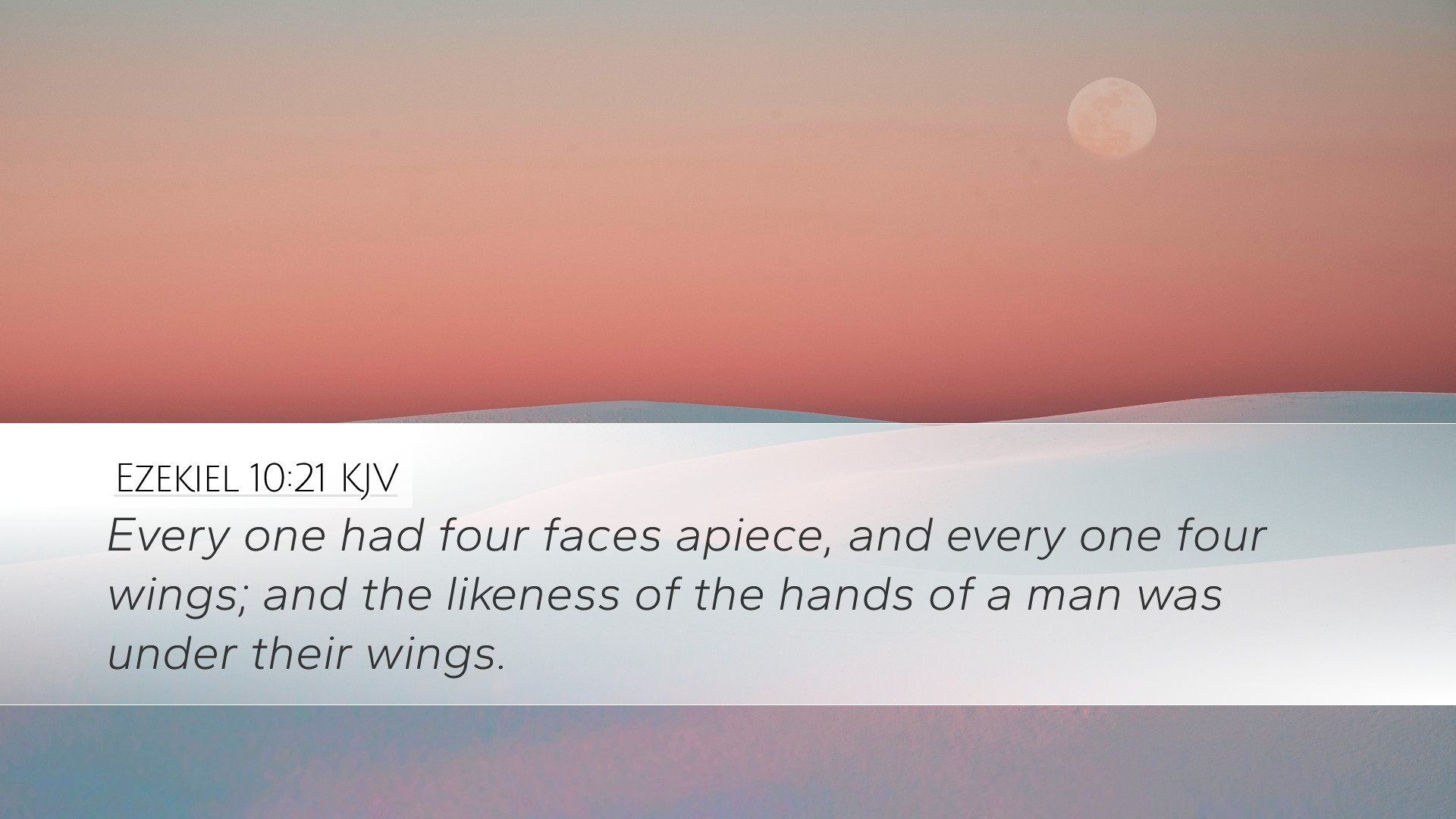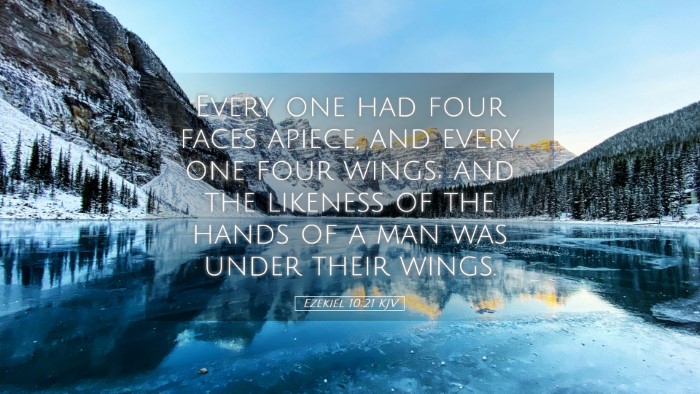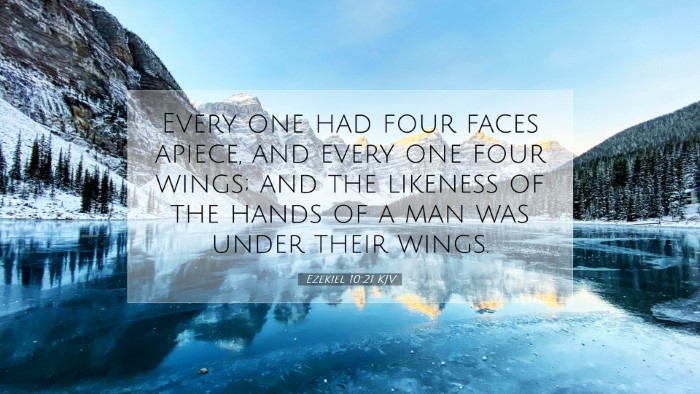Ezekiel 10:21 Commentary
“Every one had four faces apiece, and every one four wings; and the likeness of the hands of a man was under their wings.” - Ezekiel 10:21
Introduction
The passage from Ezekiel 10:21 is part of a vision that the prophet Ezekiel experienced during his exile in Babylon. This particular verse emphasizes the unique and multifaceted nature of God's messengers, often depicted as cherubim. When interpreting this verse, it is essential to delve into the symbolism and its significance within the larger context of Ezekiel's prophetic ministry.
1. The Nature of the Cherubim
Ezekiel sees a vision of four living creatures, later identified as cherubim, each possessing distinct characteristics. The cherubim in this context symbolize the divine presence and the complexity of God's attributes.
1.1 Four Faces and Their Meaning
According to Matthew Henry, the four faces represent different aspects of God's creation – man, lion, ox, and eagle. Each face holds significance:
- Man: Represents intelligence and reason, highlighting humanity's unique position in creation.
- Lion: Symbolizes strength and majesty, depicting God as a powerful ruler.
- Ox: Signifies servitude and endurance, reflecting God's sustaining power.
- Eagle: Represents swiftness and transcendence, illustrating God's ability to oversee all creation.
1.2 The Wings as a Symbol of Action
The four wings of the cherubim signify their readiness to execute God's commands. Albert Barnes notes that wings denote agility and swiftness in fulfilling their duties, emphasizing the promptness with which divine beings respond to God's will.
2. The Significance of the Hands of a Man
The imagery of the hands of a man under the wings suggests action and the involvement of humanity in divine purposes. Adam Clarke points out that this aspect signifies that while divine beings serve God, they also represent human action and collaboration in God's plans.
2.1 Humans in Divine Service
This symbolism of hands serves to remind us that God desires to work through people. It reflects the integral role of humanity in the unfolding of God’s divine will on earth, inviting us as believers to participate actively in God's mission.
2.2 Theology of Participation
Ezekiel’s vision encourages an understanding of a theology of participation, where believers are called to engage in spiritual and practical actions that mirror the service of the cherubim. In this way, human agency complements divine sovereignty.
3. Contextualizing the Vision
This vision emerges during a tumultuous period of history for Israel. The Babylonian exile represents a significant crisis, both politically and spiritually. In this context, Ezekiel's visions serve to reassure the exiles of God's ongoing presence and sovereignty despite their circumstances.
3.1 Assurance of Divine Presence
Matthew Henry emphasizes that the imagery reassures the exiled community of God's presence among them. Despite the tragedy of exile, God remains actively involved with His people through His angelic hosts.
3.2 Continuity of God's Plan
This vision serves to affirm that God's salvation plan is still in motion. Even in apparent abandonment, God is intricately involved in guiding and directing His people. The heavenly beings serve to remind the people of God's control over the earthly realm.
4. Theological Reflections
This passage compels deeper theological reflection, particularly regarding the holistic nature of God's messenger and participation of humanity.
4.1 Multifaceted Nature of God’s Revelation
The cherubim embody a rich theological tapestry that reveals God in multifaceted roles as Creator, Redeemer, and Sustainer. Albert Barnes notes that each face represents God’s engagement with the world and the necessity for believers to understand Him from multiple perspectives.
4.2 Calling for Active Participation
This vision challenges contemporary believers to recognize their role as co-laborers with God. As the hands of a man are under the wings, we are reminded that God's work is both divine and human. Every action, prayer, and service contributes to God's kingdom unfolding on earth.
Conclusion
Ezekiel 10:21 invites pastors, students, theologians, and scholars to explore the depths of God’s character as revealed through the cherubim. The rich symbolism of the four faces and wings, along with the hands under the wings, beckons a profound reflection on the nature of God and the role of humanity in His divine plan. As we engage with this passage, let it inspire us to embrace our call to action within God's ongoing narrative of redemption and grace.


